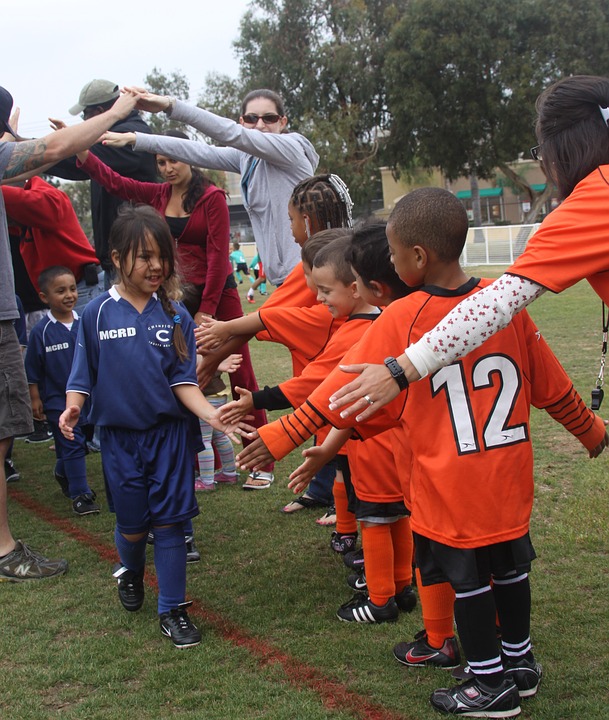If your child has autism, you know the challenges it can present. From difficulty with social communication to meltdowns from sensory overload.
Kids with autism may struggle to cope with everyday life.
But that doesn't mean they can't make huge gains with the right help.
Here's now the 0g Soccer trainer can help make life easier for your child with autism (and you!).
1. Reduce sensory overload (and the meltdowns!)
Many kids with autism also have sensory processing disorder (SPD). Kids with SPD have trouble processing sensory input about the world around them, so they tend to lack coordination, can be clumsy, and have difficulty planning their motor activities.
There isn't a single recommended treatment for SPD, but experts recommend sensory integration as part of their treatment plan. The goal of sensory integration is to help kids with SPD improve how they process sensory input.
This is accomplished by exposing them to sensory input in a controlled, repetitive way, in order to let their brains adapt to the exposure. Through time, this can lead to an improved tolerance for sensory input.
That's where the 0g Soccer trainer comes in. Using controlled, repetitive movements, the 0g Soccer trainer helps kids improve how they process sensory input in a manner they'll actually enjoy.
To learn more about how the 0g Soccer trainer can help kids with SPD, click here.
2. Improve gross motor skills
Coordination can be challenging for most kids with autism. They lack body awareness, or the sense of where their body is in space. This leads to increased clumsiness and even problems playing simple sports.
Over time, their impaired coordination can even make them less likely to join active games or play with their peers.
The last thing a child with autism needs is more barriers to successful interactions with their peers. The 0g Soccer trainer helps kids improve their coordination and motor skills, which leads to improvements on and off the field.
It also strengthens their leg muscles, addressing common issues like low muscle tone, and offers kids improved body awareness.
3. A much-needed confidence boost
Kids with autism often find sports challenging because of the need for social interaction with their peers, onslaught of sensory input, and lack of coordination. And, let's face it, there's nothing fun about playing sports that don't come naturally to you.
The 0g Soccer trainer helps kids with autism improve their sensory tolerance and coordination, helping them to feel good about their game play and their role on a team (or even just playing tag with the neighborhood kids!).
As kids' confidence grows, their willingness to interact with their peers is more likely to grow, too. At the very least, even if they never love sports, they'll gain confidence in themselves and their abilities.
4. Play together
Children with autism generally relate better to adults than their peers. This can make it challenging for their parents to find ways for them to get in enough social interaction, especially when their days are filled with therapies and appointments.
A 0g Soccer trainer is a quick and easy way to play with your child that offers the added benefit of acting as a therapeutic intervention.
Make therapy fun by taking turns with your child, or even challenging each other to see who can do the most footwork without losing control of the ball or who can kick the ball the fastest.
5. Therapy is expensive, and can be hard to find
In an ideal world, every child with autism would have access to all of the latest breakthroughs in treatments and therapies. Unfortunately, that's not the case and it can be difficult to find qualified therapy providers or to afford them once you do.
The 0g Soccer trainer is an inexpensive, home-based tool you can use to help your child when you're not able to access more conventional treatments.
Use it as part of their daily sensory diet, in lieu of physical therapy to strengthen muscles and improve coordination, or even invite your child's classmates over to play on it as an informal social skills group. Get creative!
6. Supplement existing therapies
If your child is already using traditional therapies, don't be afraid to bring the 0g Soccer trainer along. It's easy to move and transport, and it can make a great tool for your child's therapists.
Ask your child's therapists how it can be incorporated into their appointments, or even how you can use it at home to supplement the work your child with autism does in their therapy appointments.
7. Let them be repetitive!
One of the primary characteristics of autism is engaging in repetitive behaviors. While it's important to teach your child how to be flexible, instead of needing extreme routines, the 0g Soccer trainer is one thing where it's not just okay, but actually great, to be repetitive!
Giving your child an "approved" place to be as repetitive as they want can be an important tool for helping them overcome their need for routine and repetition in other areas.
Think of it like giving a sensory-seeking child a chew necklace to discourage chewing other objects. The 0g Soccer trainer is their special equipment for repetition, and it will even reward them with improved strength and coordination through time.


